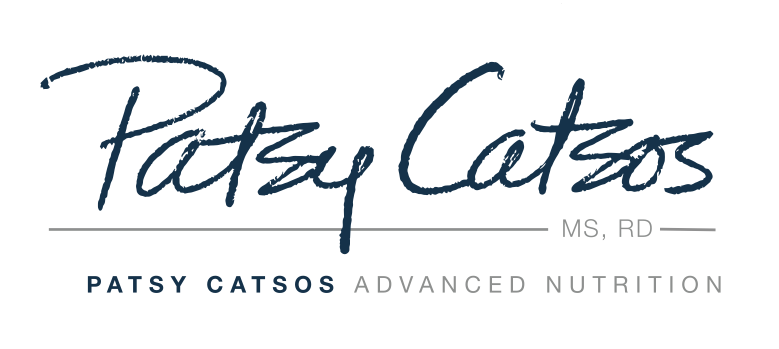QUESTION
Thanks for sharing about the latest research presented at the Italian conference. However, I have a question based on your bulleted sharings. You said, "Dr. Heidi Staudacher: There are concerns about the impact of low-FODMAP diet on nutrient intake, especially for patients with other dietary restrictions. Prebiotic fiber often needs extra attention." Could you explain more about this and what it might look like to address prebiotic fiber, or nutrition problems from long term adherence to a low FODMAP diet? What nutrients are missing, and what is the best way to supplement them?
ANSWER
The potential risks of low FODMAP diets do need to be addressed along with the benefits, but there is no need to be alarmed and no call for some of the scary headlines I’ve seen lately. Some people will write anything to get your attention, with words like “warning” and “danger,” especially when they are trying to sell you an alternate solution to your problem. Even responsible doctors and writers can sometimes be too quick to assume that a low FODMAP diet must be short on nutrients.
It is possible to meet your nutrient needs on a varied, low-FODMAP diet, with the possible exception of prebiotic fiber.
Trouble with meeting nutrient needs does not come from the low-FODMAP diet per se but from the addition of other dietary restrictions that people place upon themselves or that result from their other medical conditions. For example, people who don't eat any animal products are going to have to plan very carefully to meet their needs for protein and vitamin B-12 because legumes are limited on the diet, and because only animal products contain B-12. People who don't like vegetables might have difficulty consuming enough vitamins from food, but that was probably true before they ever even heard of FODMAPs. People with very high calorie needs might have to plan carefully to meet them, given the limited portion sizes of many foods on the low-FODMAP diet. Such people should be working with a dietitian to get as close as they can to adequate intake of nutrients from food. People without other dietary restrictions should eat a wide variety of low-FODMAP foods to consume a nutrient-rich diet.
What about prebiotic fiber? What are prebiotics and how can you get them on a low FODMAP diet?
““A dietary prebiotic is a selectively fermented ingredient that results in specific changes, in the composition and/or activity of the gastrointestinal microbiota, thus conferring benefit(s) upon host health.””
In other words, they are food components that are believed to encourage the growth of good bacteria in the gut. After all, bacteria in the gut do perform some important services for the human body, and we don't want to starve them out altogether; we are just aiming to keep the rate of fermentation at a tolerable level. Oligosaccharides (short chain fibers) are considered prebiotics, and a low FODMAP diet deliberately limits these. Oligos are not the only potential prebiotics, however, though they are the most widely known. Resistant starches are another food component that are considered prebiotic. Researchers are actively working to find out how the theoretical risk of reduced prebiotic intake affects the good work of the gut microbiome.
Follow these tips to get as close as you can to consuming enough prebiotic fiber and resistant starch:
Good sources of prebiotic fiber and resistant starches.
- Eat a wide variety of low FODMAP foods. Don't avoid foods that contain oligos in small amounts, just eat them in the suggested portions, and not too many in the same meal or snack. In the IBS--Free at Last! system, these would be "bold" foods among the whole grains, vegetables, nuts and seeds. Small portions of canned, drained, lentils and chick peas are newer additions to this list of prebiotic sources. In the Monash University low FODMAP app, foods with moderate amounts of FODMAPs are usually "yellow" in the traffic light system.
- Chia seeds are an especially good source of fiber, and seem to be well tolerated by a majority of patients. If these are a new food for you, start with a small serving, such as 1/2 a teaspoon, and increase as tolerated up to 2 tablespoons. They must be well hydrated. I usually stir them into my morning oatmeal or add them to a smoothie.
- Good sources of resistant starch include oatmeal, bananas, corn tortillas, and potatoes (especially after they have been cooled).
Discuss the timetable for reintroducing FODMAPs with your dietitian or doctor. Don't stay on the elimination phase of the diet any longer than necessary to establish that the FODMAP approach is the right one to help you manage your IBS, usually just 2-3 weeks. Then begin the process of reintroducing FODMAPs. If you find you cannot liberalize your low FODMAP diet very much without triggering symptoms, put a priority on oligosaccharides. If you must choose between eating more onions and drinking more fruit juice, go with the onions.
This page may contain affiliate links. We are a participant in the Amazon Services LLC Associates Program, an affiliate advertising program designed to provide a means for us to earn fees by linking to Amazon.com and affiliated sites.


